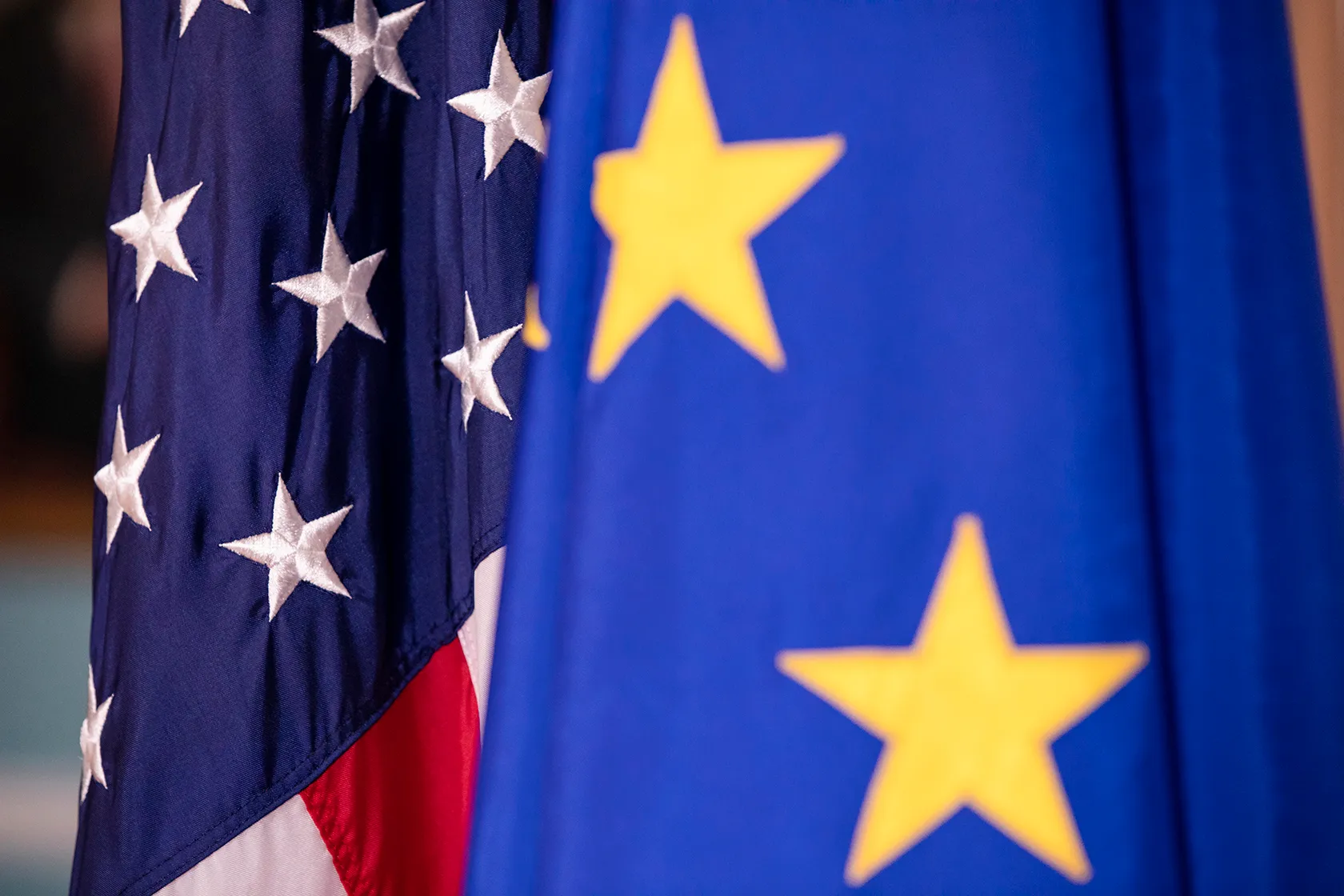As the U.S. and China reach a temporary truce in their trade dispute and the United Kingdom finalizes a limited trade deal with Washington, the European Union is moving to accelerate its own negotiations with the United States to avoid new import duties.
On Thursday (May 15, 2025), European Commissioner Maros Sefcovic confirmed plans to “intensify” transatlantic trade talks. Speaking ahead of an EU trade ministers’ meeting in Brussels, he said he and U.S. Trade Representative Howard Lutnick will meet “very soon.”
The EU is seeking to prevent a proposed 20% tariff on its exports to the U.S., which is set to take effect in July. The measure follows the U.S. administration’s recent announcement of reciprocal tariffs affecting a wide range of global imports.
The shift in momentum comes after the U.S. and China agreed to scale back punitive duties, reducing tariffs from over 100% to more moderate levels. During the 90-day transition period, Chinese exports to the U.S. will face a 30% tariff, while American goods entering China will incur a 10% charge.
Shortly before that, Washington and London reached a preliminary agreement—the first since the U.S. declared April 2 as “Liberation Day.” The deal offers British auto manufacturers lower tariffs for exports to the U.S. and grants American exporters, including farmers and ethanol producers, greater access to the U.K. market.
Trade pressure mounts ahead of July
While the U.S. administration has voiced criticism of the EU’s pace in trade talks, observers suggest broader economic dynamics will shape the next steps. Although President Trump recently claimed that “Europe is worse than China in some ways,” analysts point out that both sides have incentives to avoid a broader trade clash.
“These two agreements—the ones with China and the U.K.—may give EU negotiators more confidence to stay the course: delay escalation, threaten retaliation, but remain open to negotiation,” said Andrew Kenningham of Capital Economics.
Still, reaching a U.S.-EU trade pact could prove more complicated. Analysts note the EU’s significant goods trade surplus with the U.S. and the challenge of achieving alignment among the bloc’s 27 member states. The EU had prepared retaliatory tariffs on U.S. goods worth €95 billion ($107 billion) in response to earlier U.S. measures on steel, aluminum, and autos. However, those countermeasures have been paused to allow space for dialogue.
EU officials are also considering export restrictions on recycled steel and chemicals destined for the U.S., though no decisions have been finalized.
Uncertainty over U.S. demands
Despite recent progress with other trading partners, it remains unclear what the U.S. expects from Europe in exchange for tariff relief.
“Trump still appears to be waiting for something he finds valuable from the EU,” said Claudia Schmucker, director at the German Council on Foreign Relations. She noted that the administration’s expectations are still “uncertain,” though likely to involve more imports of U.S. agricultural and energy products.
Brussels has already offered increased purchases of American liquefied natural gas, artificial intelligence technologies, and soybeans. It has also proposed mutual elimination of tariffs on industrial goods. However, the EU has resisted U.S. demands on issues like value-added tax policies and product regulations, which Washington has labeled as trade distortions.
According to the U.S. Trade Representative’s Office, the U.S. goods trade deficit with the EU reached $235.6 billion (€210 billion) in 2023, up 12.9% from the previous year. Eurostat data placed the EU’s surplus at €157 billion.
Internal divisions persist within the EU
While President Trump’s harsh rhetoric—including an unsubstantiated claim that the EU was created to “cheat” the U.S.—has drawn criticism, some believe it may inadvertently strengthen the EU’s internal consensus, even among states favoring bilateral deals.
“Trump’s tone may help unite EU governments that otherwise disagree,” said Schmucker. “It adds urgency and cohesion to Brussels’ strategy.”
Swedish Trade Minister Benjamin Dousa, speaking ahead of the Brussels meeting, expressed skepticism about the chances of a rapid deal. “I don’t see an agreement coming in the next few weeks,” he said.
Dousa warned that if the U.S. follows through with a base 10% tariff on all EU imports—as it did with the U.K.—retaliatory measures from Brussels could follow: “The U.S. should expect a response.”



